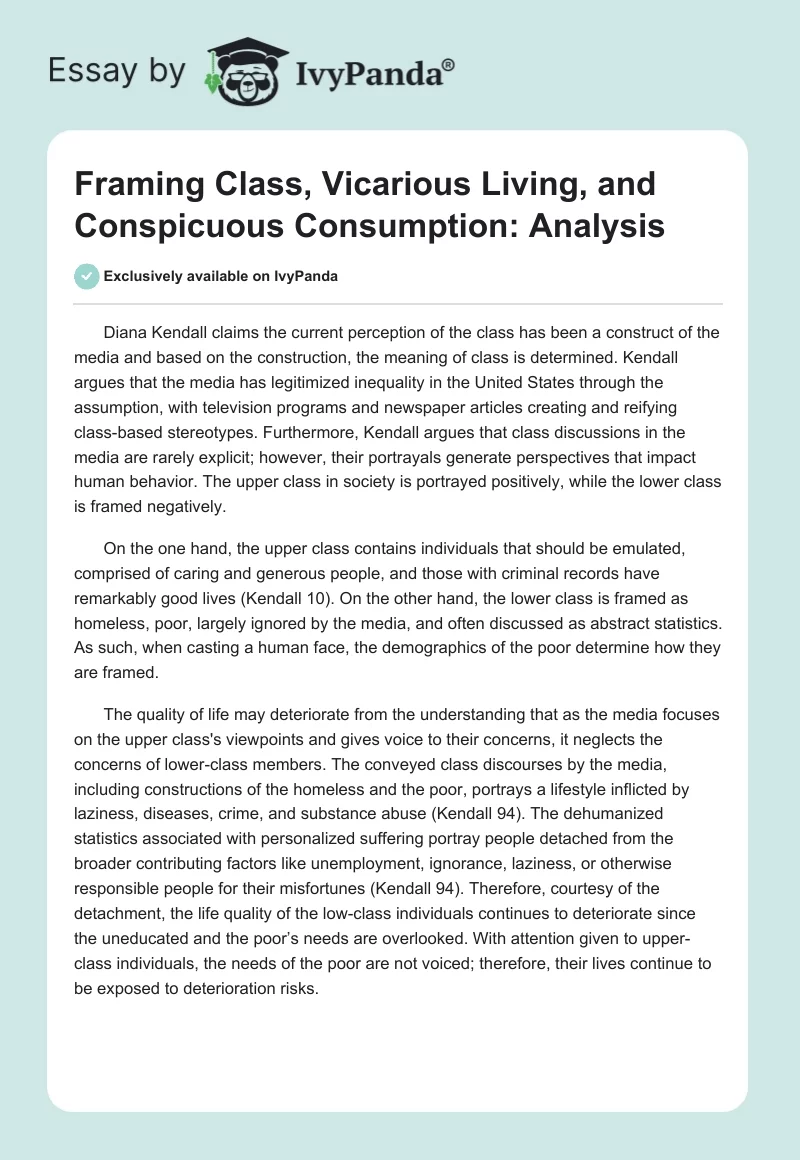Diana Kendall claims the current perception of the class has been a construct of the media and based on the construction, the meaning of class is determined. Kendall argues that the media has legitimized inequality in the United States through the assumption, with television programs and newspaper articles creating and reifying class-based stereotypes. Furthermore, Kendall argues that class discussions in the media are rarely explicit; however, their portrayals generate perspectives that impact human behavior. The upper class in society is portrayed positively, while the lower class is framed negatively.
On the one hand, the upper class contains individuals that should be emulated, comprised of caring and generous people, and those with criminal records have remarkably good lives (Kendall 10). On the other hand, the lower class is framed as homeless, poor, largely ignored by the media, and often discussed as abstract statistics. As such, when casting a human face, the demographics of the poor determine how they are framed.
The quality of life may deteriorate from the understanding that as the media focuses on the upper class’s viewpoints and gives voice to their concerns, it neglects the concerns of lower-class members. The conveyed class discourses by the media, including constructions of the homeless and the poor, portrays a lifestyle inflicted by laziness, diseases, crime, and substance abuse (Kendall 94). The dehumanized statistics associated with personalized suffering portray people detached from the broader contributing factors like unemployment, ignorance, laziness, or otherwise responsible people for their misfortunes (Kendall 94). Therefore, courtesy of the detachment, the life quality of the low-class individuals continues to deteriorate since the uneducated and the poor’s needs are overlooked. With attention given to upper-class individuals, the needs of the poor are not voiced; therefore, their lives continue to be exposed to deterioration risks.
Work Cited
Kendall, Diana. “Framing Class, Vicarious Living, and Conspicuous Consumption.” (2016): 21-46.


